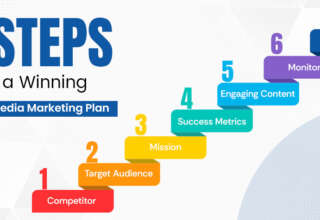![Top 7 Impacts of Social Media: Advantages and Disadvantages [Updated]](https://www.simplilearn.com/ice9/free_resources_article_thumb/real-impact-social-media.jpg)
Abstract
Social media is an omnipresent part of everyday life. It provides users with an easy way to engage and connect with others without meeting face-to-face. This form of communication provides a lot of opportunity for companies and individuals to reach a massive audience. What is the purpose of social media, and how does it tie into science? Well, you see, it all depends on who you know and how active your social media presence is. Is there a benefit for sharing research across social media? The benefits of social media stem from active participation and the generation of new attractive content from an individual. Research is about producing new information, and social media offers unique opportunities to present new content.
The Use of Social Media and its Impact for Research
Jessica Rogers
Social media is an omnipresent part of everyday life. It provides users with an easy way to engage and connect with others without meeting face-to-face. This form of communication provides a lot of opportunity for companies and individuals to reach a massive audience. What is the purpose of social media, and how does it tie into science? Well, you see, it all depends on who you know and how active your social media presence is. Is there a benefit for sharing research across social media? The benefits of social media stem from active participation and the generation of new attractive content from an individual. Research is about producing new information, and social media offers unique opportunities to present new content.
What is Social Media?
In today’s world social media is an ever-present facet of life that surrounds us. Almost every advertisement, whether television, radio, magazine, movie preview, podcast, newspaper, or elsewhere, will mention its social media presence in some way. ‘You can like us on Facebook, Check us out on Instagram,’ or perhaps ‘Watch our channel on YouTube’, are just some of the hooks that companies will provide to further build their brand and increase their visibility. As of January 2019, there were around 7.7 billion people in the world, of which 3.397 billion were active social media users (Smith 2019). Moreover, there are almost one million new users to some form of social media each day, or a new user every 10 seconds; 300 hours of video are uploaded to YouTube alone every minute (Smith 2019). To summarize, if you have found yourself boycotting the idea of social media, I hate to break it to you but it is here to stay.
The Underlying Purpose of Social Media
For those who do not know, a key theme of social media is ‘engagement’. Have you ever reached out to a company on their social media for any reason? The different social media outlets are simply interactive pathways on the internet that companies and businesses use to form relationships and network with others without leaving one’s desk. As a scientist, it is essential to attend conferences, give lectures, and lead panel discussions to network with others about common science interests. Today, there are an endless amount of resources accessible on the internet at your fingertips that allow you to do the same thing. Twitter first surfaced as a news and social networking site in which users post content and interact with each other through messages called ‘tweets’. The use of hashtags (a type of metadata tag) across all social media platforms allows people to search for certain interests and see all content related to that particular hashtag. This is a quick way to find and engage with people through common interests. Of course, you should still actively participate in your community by attending conventions and conferences, but if you truly seek to engage with more people, then you should not simply ignore the outlet of social media until you try it, as it can connect you with an even larger audience. Think of it this way, your lecture or discussion is most likely already being recorded, so what will you do with that recording?
Social media has a clear and direct purpose for businesses that sell a product or service and are searching for ways to advertise their brand. Of course, there other ways to use social media. Most people use social media to be, well, social, and communicate with family, former colleagues, or keep in touch with old classmates. The idea of a technological way of staying in touch with people is how Facebook was created. Facebook adds 500,000 new accounts each day, which equates to 6 new profiles every second (Smith 2019). So who exactly is in your friends list on Facebook? Who is subscribing to your channel on YouTube? Who is retweeting your tweets? If you want to broaden your impact beyond your discipline, you need to have a strong base of connections in your network.
The average person has 5.54 social media accounts (Smith 2019). Of those accounts, whatever one’s goal is, is it being projected across multiple platforms? Exactly who is engaged? These are all important questions that deal with your potential reach as an individual. The bottom line is if you seek community engagement in what you are doing, you must first be active in that particular community.
Social Media and Research
Now let us change course and focus on a different path of social media, that is where scientists use it to promote their research. The same rule applies. While all social media outlets have the potential for massive reach, it all comes back to a matter of whom you connect with or engage. However, the fast-paced and live aspect of social media can drive skeptical researchers not to publish, but successful reactions and quick responses can increase a researcher’s credibility. Research is about producing new information, and social media offers unique opportunities to present new content.
As a scientist, once you publish your research, you want to share it with as many colleagues and people so that they may read your novel findings. You want to share your hard work with many individuals. Almost all researchers send an email to their colleagues and individuals within their institution, which essentially is the first step in promoting their work. What if you took that one-step further and reached out to the scientific community on social media? You probably already have some form of a social media account and possibly one that relates to the scientific community; ResearchGate is a popular academic social media outlet. ResearchGate is a website that provides scientists with a forum to share and discuss their research as well as find collaborators. If you share your research on your personal account, then the only people that will see it are those whom you connect with. However, if you were active on different community or special interest pages that relate to your area of study and participate in regular discussions with other researchers on these sites, then you may find yourself having a much wider reach. Again, it all stems back to what you wish to accomplish with your research.
What Does that Mean for you?
Before getting started, you must ask yourself what exactly you want to gain from social media. If an increased reach is primarily what you seek, then you must be active in multiple communities related to your specialty. You already stay current on industry news and new research on your own, which is what others may be doing when they discover your research. However, if engagement and stimulated discussions are what you seek, then your active presence is required. Participating and driving discussions and posting content is what ultimately increases your visibility. Sharing and reposting others’ work, and being an active member on social media brings more attention to your profile and can enhance your reputation. A good place to start is with the professional social networking site LinkedIn that allows you to make connections with people based on job interests.
You can always go the old fashioned, tried and true route and send an email about your research, but how many new people reach out to you regarding your work? Maybe next time, try posting your research on a couple of industry pages, tag a few people in the community, and see if you make any new connections or spark any intriguing conversations. Because social media allows you to interact instantly with people across the globe, you may be surprised at who or how many people engage with you.
[“source=bioresources.cnr.ncsu”]






